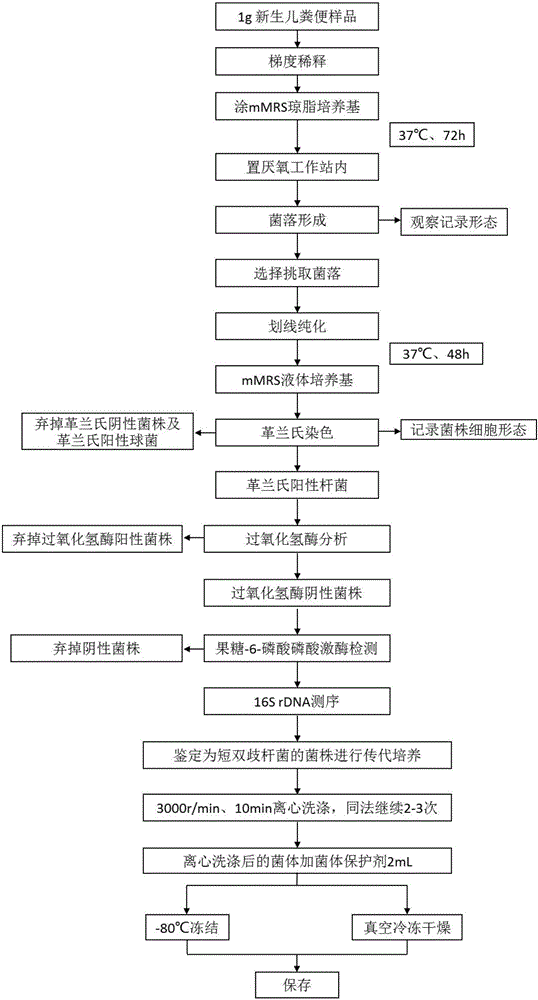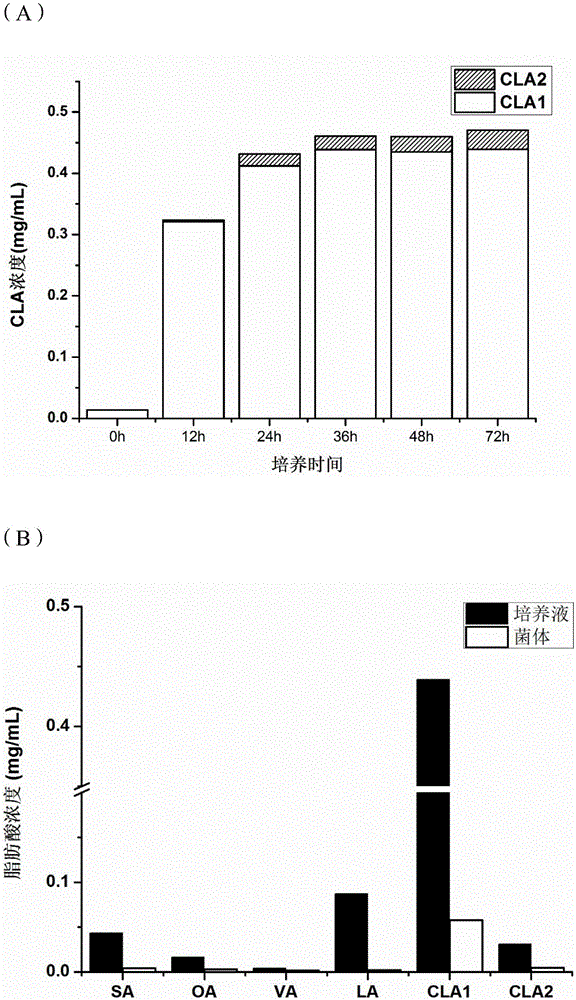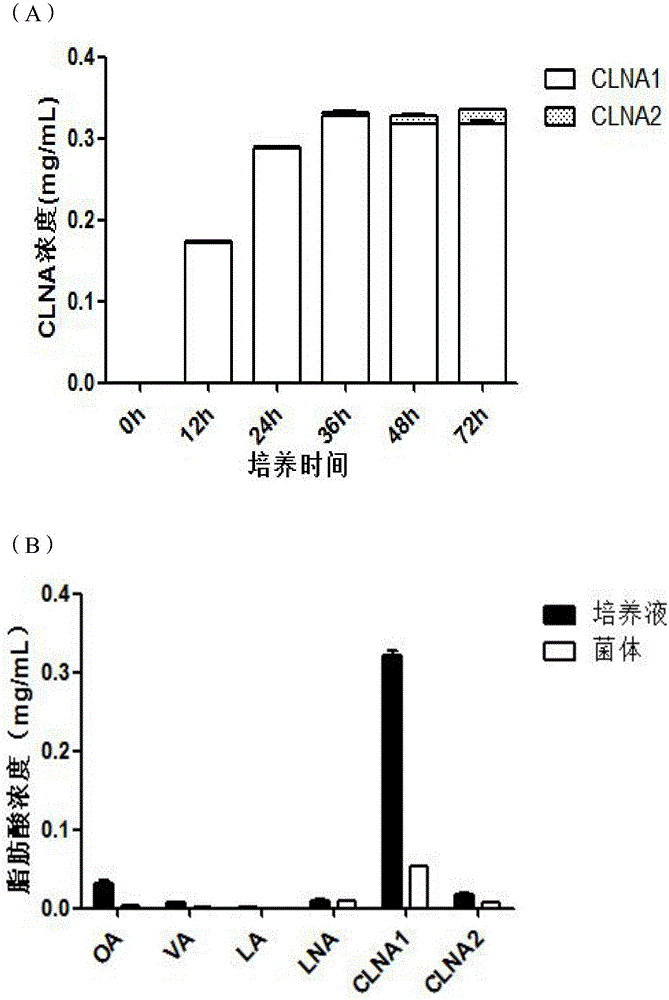Bifidobacterium breve and application thereof in preparing conjugated linoleic acid or conjugated linolenic acid
A technology of Bifidobacterium breve and conjugated linoleic acid, applied in the direction of bacteria, microorganism-based methods, biochemical equipment and methods, etc., can solve reagent residue, low yield, difficulties in separation and purification of conjugated linolenic acid, etc. question
- Summary
- Abstract
- Description
- Claims
- Application Information
AI Technical Summary
Problems solved by technology
Method used
Image
Examples
Embodiment 1
[0037] Example 1: Collection of samples and isolation and identification of bifidobacteria
[0038] Fecal samples of newborns were collected from the Ninth People's Hospital of Wuxi City.
[0039]Take 1g of neonatal feces sample, spread it on mMRS solid medium after serial dilution, culture it at 37°C in an anaerobic environment for 72 hours, observe and record the colony shape, pick and purify the colony, and then put it in MMRS liquid medium Cultivate at 37°C for 48 hours, perform Gram staining on the obtained colonies and record the strain morphology, discard the Gram-negative strains and Gram-positive cocci in the colonies, and select the Gram-positive bacilli, which are analyzed by catalase Afterwards, the catalase-positive strains were discarded, and the catalase-negative strains were kept, and the negative strains were detected by fructose-6-phosphate kinase. The obtained strains were all identified as Bifidobacterium breve by 16S rDNA sequencing, and named as Bifidobac...
Embodiment 2
[0048] Example 2: Bifidobacterium breve C11 (CCFM683) biotransformation of conjugated linoleic acid
[0049] The specific experiment is as follows:
[0050] 1. Strain activation
[0051] The glycerol tube containing Bifidobacterium breve C11 was taken out from the -80°C refrigerator, and the bacterial solution was streaked on the mMRS solid medium, and cultured at 37°C for 48 hours in an anaerobic environment. The grown single colonies were picked and inoculated in mMRS liquid medium, cultured at 37°C for 48 hours under anaerobic environment, and continuously activated for 3 generations.
[0052] 2. Preparation of linoleic acid mother liquor
[0053] Weigh 300mg of linoleic acid (LA) and 200mg of Tween-80, dissolve in water and dilute to 10mL, stir and emulsify thoroughly, filter and sterilize through a 0.45μm sterile filter membrane, and store at -20°C in the dark.
[0054] 3. Co-culture with linoleic acid
[0055] The activated bacterial solution was inoculated into 10 m...
Embodiment 3
[0069] Example 3: Bifidobacterium breve C11 (CCFM683) biotransformation of conjugated linolenic acid
[0070] 1. Strain activation
[0071] The glycerol tube containing Bifidobacterium breve C11 was taken out from the -80°C refrigerator, and the bacterial solution was streaked on the mMRS solid medium, and cultured at 37°C for 48 hours in an anaerobic environment. The grown single colonies were picked and inoculated in mMRS liquid medium, cultured at 37°C for 48 hours under anaerobic environment, and continuously activated for 3 generations.
[0072] 2. Preparation of linolenic acid mother liquor
[0073] Weigh 300mg of α-linolenic acid (α-LNA) and 200mg of Tween-80, dissolve in water and make up to 10mL, stir and emulsify thoroughly, filter and sterilize through a 0.45μm sterile filter membrane, and store at -20°C, protected from light .
[0074] 3. Co-culture with linolenic acid
[0075] The activated bacterial solution was inoculated into 10mL mMRS liquid medium contain...
PUM
 Login to View More
Login to View More Abstract
Description
Claims
Application Information
 Login to View More
Login to View More - R&D
- Intellectual Property
- Life Sciences
- Materials
- Tech Scout
- Unparalleled Data Quality
- Higher Quality Content
- 60% Fewer Hallucinations
Browse by: Latest US Patents, China's latest patents, Technical Efficacy Thesaurus, Application Domain, Technology Topic, Popular Technical Reports.
© 2025 PatSnap. All rights reserved.Legal|Privacy policy|Modern Slavery Act Transparency Statement|Sitemap|About US| Contact US: help@patsnap.com



